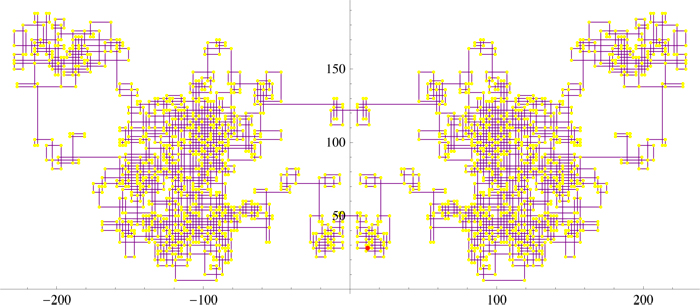Just for your amusement,
here is a spiral of length 2,956 primes that crosses just one axis, and hits no
prime on that axis.
I encountered it twice, once in a horizontal orientation (seed: $12+28 i$)
and once in a vertical orientation (seed: $43 + 55 i$).
That it should occur twice is a consequence of the symmetry of the conditions
that render a Gaussian integer prime.
Horiz Spiral http://cs.smith.edu/%7Eorourke/MathOverflow/GSpiral1.jpg
alt text http://cs.smith.edu/%7Eorourke/MathOverflow/GSpiral2.jpg
